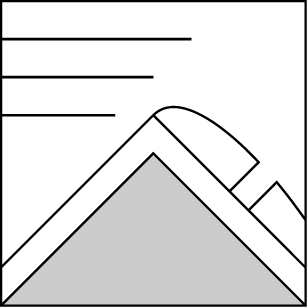Basic Information
Observation Details
Observation Date:
February 14, 2023Submitted:
February 14, 2023Observer:
SAC - Savage, GensweinZone or Region:
Galena Summit and Eastern MtnsLocation:
Titus Ridge (8700-9700': mostly the eastern half of the compass)Signs of Unstable Snow
Recent Avalanches?
None ObservedCracking?
None ExperiencedCollapsing?
IsolatedSnow Stability
Stability Rating:
Very GoodConfidence in Rating:
ModerateStability Trend:
WorseningBottom Line
This storm did not do much to change the avalanche hazard at lower and middle elevations. There, we did not see any wind slabs, there was not enough new snow to trigger sluffs on the icy surfaces below, and we did not observe signs of instability associated with the older more deeply buried persistent weak layers. At upper elevations, we would expect to find fresh wind slabs immediately below exposed ridgelines and possibly farther downslope.
Advanced Information
Weather Summary
Cloud Cover:
ObscuredTemperature:
5-10FWind:
LightNew/Recent Snowfall:
Above 9300': HST=10-12cm. At Galena Summit HST=5-6cm. At Galena Lodge HST=2cm. Winds were light but gusty at middle elevations and sounded stronger (MODERATE?) above 10,000'We were out from 2:30-5 PM. About 2-4cm of very low-density snow fell at the pass while we were out (snowing S-1 to S2 or S3). There was a strong orographic effect with snowfall amounts (snowfall increased with elevation). There was a fair amount of recent, low-density snowfall available for transport.
Snowpack Observations
Quick tour to observe recent snowfall, wind-loading, and associated stability.
No wind slabs observed below 9700'. The wind had sifted up to 30cm into the top of some leeward middle elevation starting zones, but there were no slabs.
On steep solar slopes, we could not get any loose snow slides started. The storm snow was sticking to the old surface OK. That said, another few inches of storm snow may make small sluffs possible.
Summary: There's plenty of weak snow below the storm snow (FC on shady aspects, impressive FC under a crust on the margins) and a questionable interface (hard icy sun crust) on S-SW...but no slab/not enough snow above to be a concern anywhere we traveled today.
Evidence of last weekend's heat: There were many "tree bombs" that came down in recent days (big frozen blobs on the skin track with no tracks on them). On NW-N-NE-E, the FC under the "newer" snow looked better and was stiffer/more cohesive than at similar sites in the Wood River Valley; I don't know whether to attribute this to the change in location or to the few days of warmer weather that may have helped "heal" the well developed FC? On more solar slopes where there was a 1-2cm crust above the FC, the FC were extremely weak and did not seem to benefit from the warmer temperatures over the past few days.
Avalanche Problems
| Problem | Location | Distribution | Sensitivity | Size | Comments |
|---|---|---|---|---|---|
 Wind Slab
Wind Slab
|
|
Unknown | Unknown |
Layer Depth/Date: with this storm Comments: Shaded area indicates where we expect to find wind slabs based on low density snowfall available for transport and hearing significant winds at upper elevations. There were no wind slabs at middle elevations. |
Terrain Use
We planned to avoid wind-loaded and/or large consequential starting zones over 35*. We stuck with this plan, and we skied non-wind-loaded slopes around and over 35* on E and NE aspects.
